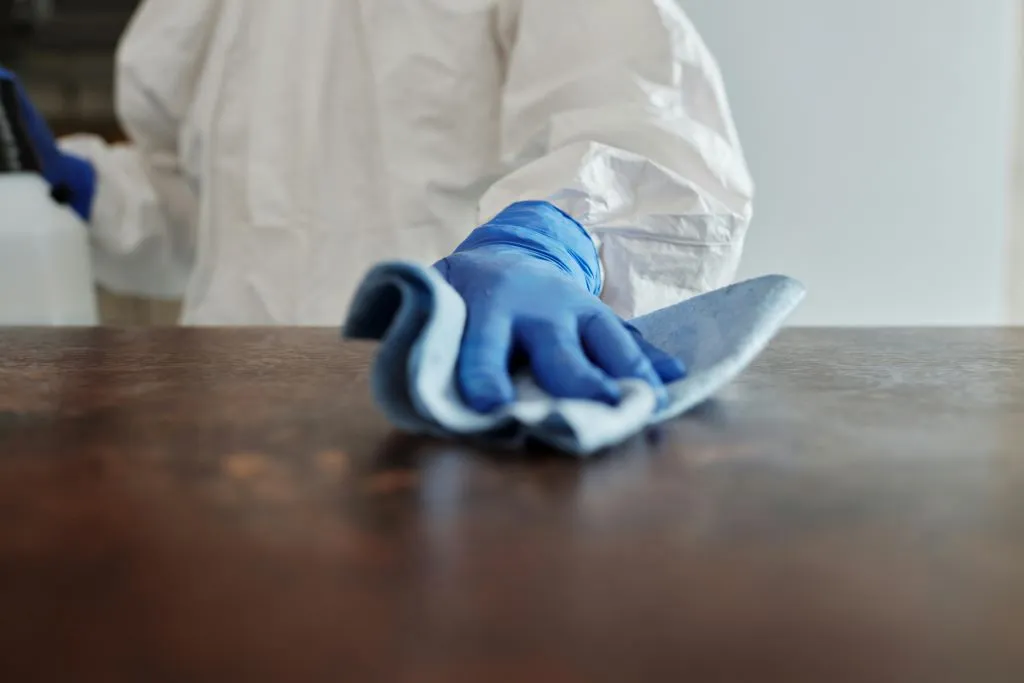News Details

EPA Finalizes Test Methods for Measuring Disinfectant Residues on Hard Surfaces
On June 13, 2024, the U.S. Environmental Protection Agency (EPA) released finalized test methods for measuring disinfectant residues on hard surfaces treated with quaternary ammonium and phenolic compounds after rinsing with water. These protocols aim to standardize the procedure for evaluating disinfectant residue levels after a potable water rinse (PWR).
Many disinfectant product labels mandate a water rinse after use to remove potentially harmful chemical residues. The primary objectives of these protocols are to quantitatively apply disinfectants, determine post-application residue levels and establish a standardized method for analysis. This is critical to ensuring the safety and efficacy of disinfectants used in a variety of environments, particularly those involving food preparation.
Introduction:
Quaternary ammonium compounds, found in many disinfectant sprays and wipes, kill bacteria, viruses, and mold. Phenolic compounds, used in household and consumer products, also kill bacteria and disinfect surfaces. These two chemical classes represent the range of disinfectant residues that could remain after a potable water rinse (PWR), with quaternary ammonium compounds expected to leave the most residues and phenolic compounds the least. The finalized test methods developed for these compounds can be adapted for other disinfectant chemicals that require a PWR.
Phenolic Compounds Protocol
- Representative Surfaces and Disinfectants:
- Surfaces: Stainless steel, laminate (e.g., Formica), granite, and ceramic tile.
- Disinfectants: Various phenolic compounds, including phenol, 2-phenylphenol, 2-benzyl-4-chlorophenol, and 4-tert-amylphenol in forms such as trigger sprays, wipes, and aerosols.
- Procedure:
- Disinfectants are applied using a pipette to ensure a known amount is deposited on the test surface.
- A TQC Scrub Abrasion and Washability Tester is used to perform standardized wiping with lint-free cotton cloths soaked in potable water.
- Residues are then extracted with methanol and analyzed using high performance liquid chromatography (HPLC) with ultraviolet detection.
Quaternary Ammonium Compounds (QACs) Protocol
- Representative Surfaces and Disinfectants:
- Surfaces: Same as for phenolic compounds.
- Disinfectants: QACs such as dialkyldimethylammonium salts and benzylalkylammonium dimethyl salts, in forms such as liquid trigger sprays, concentrates, wipes, and aerosol sprays.
- Procedure:
- Similar to the protocol for phenolic compounds, disinfectants are applied using a pipette.
- The same TQC tester is used for wiping.
- Residues are analyzed by liquid chromatography tandem mass spectrometry (LC/MSMS).
Key findings
The tests show that residue levels of phenolic compounds and quaternary ammonium compounds (QACs) vary based on the surface type and disinfectant formulation, with stainless steel surfaces generally retaining the least residue after a potable water rinse (PWR). The efficiency of residue removal was consistent across different wiping materials for both compound types, with lint-free cotton cloths being the most effective.
The use of mechanical wiping devices and precise application techniques minimizes human error and variability, increasing the robustness of these protocols for regulatory and safety assessments.
EPA’s finalized guidance for analyzing disinfectant residues on hard, non-porous surfaces after rinsing is available on Regulations.gov.
We acknowledge that the above information has been compiled from Environmental Protection Agency (US EPA).

 Twitter
Twitter
